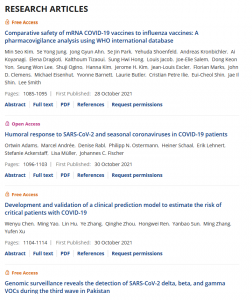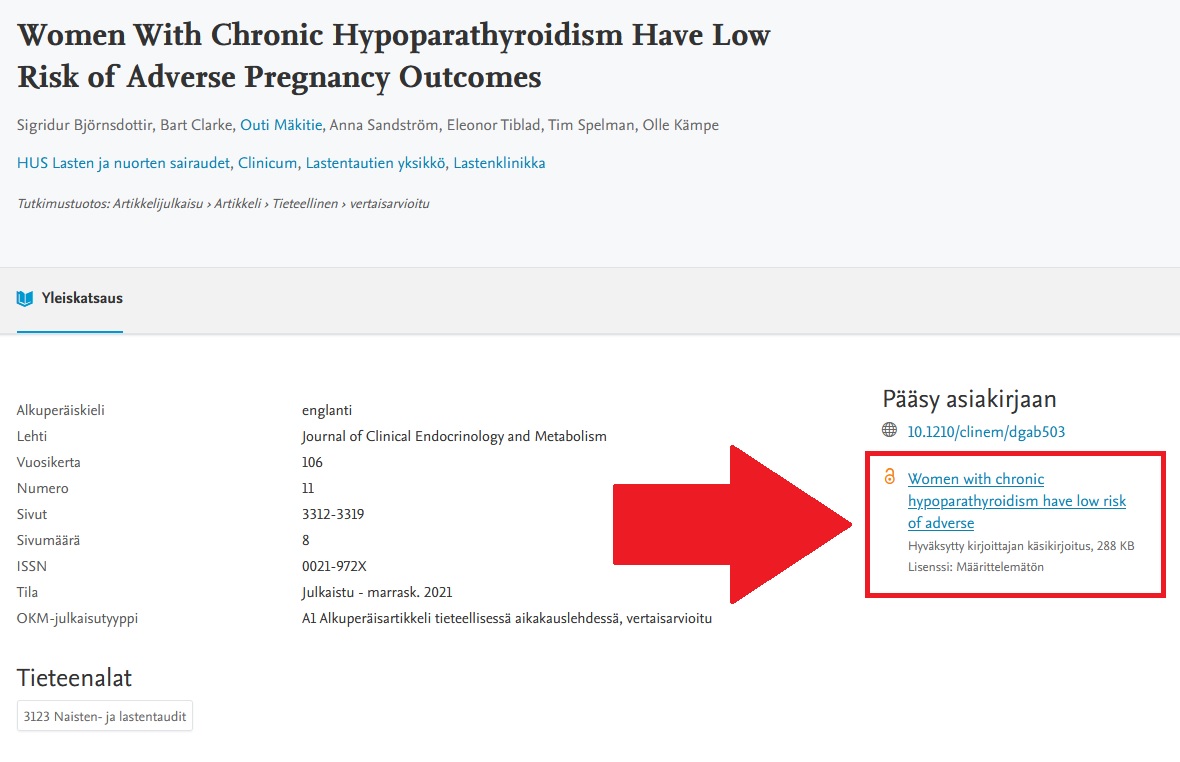What is a research article that is open to the public one day but behind a paywall the next? Answer: free article. Free articles have different names in the publishers’ websites, but the common factor is that there is no guarantee that the publication will be open in the long term. In this blog article, we will discuss the characteristics of a free article and how to identify an open access article – and we’ll also cover a bit about self-archiving.
(Tämä artikkeli on saatavissa myös suomeksi.)

Let’s imagine a situation: a researcher has published an article, and discovers that it is openly available. This openness is further confirmed by the ”free access” label above the title and there’s a promising image of an open lock (Figure 1). However, the joy doesn’t last long, as the next day the article is behind the paywall.
What happened?
Mistä on kyse? Is the article open access or not?
Short answer: the article is not open access. Or more precisely, it represents openness where openness is not defined. In open access jargon, it is referred to as bronze open access.
A publishing contract often allows the publisher to autonomously determine when an article is openly available and when it is behind a paywall. Free articles have different names on publishers’ websites:
- Free
- Free access
- Full text access*
- Full access*
- Open
In the table of contents of a journal issue, ”free access” articles are often separated from the actual ”open access” articles. Free articles increase openness of research, but they also tend to obscure open access publishing, which is full of different colours of openness – gold, green, diamond and hybrid (see the blog article which describes the main forms of open publishing.)
Often, researchers mistake journals that use the terms described above for open access journals. But they are not: free articles always indicate limited openness.
The only guaranteed way to identify the stable openness of an article is an open licence notice on the article itself or on the publisher’s website (Figure 2). The most familiar is probably a Creative Commons licence and its versions. For the publication channel, you can check the openness of the journal’s info page or, for example, the DOAJ database, which contains open access journals that meet the DOAJ criteria.

Free articles and self-archiving
At the University of Helsinki, all research publications are self-archived (see the Principles of open publishing). Since free articles are not really open access articles, it is often not possible to self-archive the final published version of an article, but a so-called final draft version (see more detailed information on article versions).
The Ministry of Education and Culture collects data on publications annually, and open access publications bring extra money for organisations. However, free articles are not considered open access unless they have been self-archived – in which case they meet the open access criteria (Figure 3). The deposit of publications in a university’s repository is also valuable in itself, as it provides a stable preservation for publications (see Two-point checklist about self-archiving for University of Helsinki researchers).

* ”Full access” and ”Full text access” may also refer to content to which an organisation has purchased access, for example in the context of journal subscriptions.
